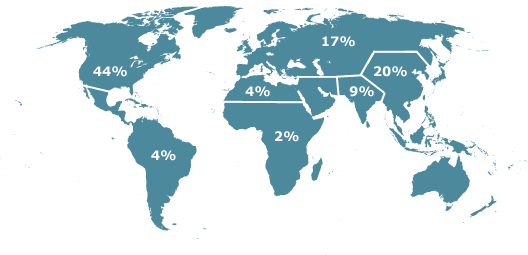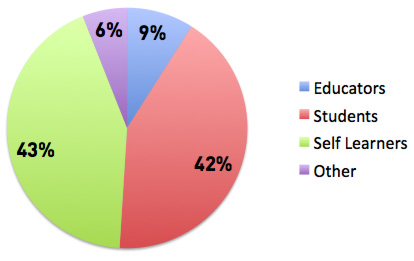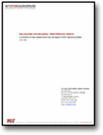OCW is accessed by a broadly international population of educators and learners.
MIT OpenCourseWare receives over 2 million visits each month. These visits come from all over the world, with over half coming from outside of North America:

Our audience is divided among students, educators, and self-learners:

MIT OpenCourseWare is being successfully used for a wide range of purposes.
| Use Scenario |
% of Use |
| Educators |
Improve personal knowledge |
31% |
| Learn new teaching methods |
23% |
| Incorporate OCW materials into a course |
20% |
| Find reference material for my students |
15% |
| Develop curriculum for my department or school |
8% |
| Students |
Enhance personal knowledge |
46% |
| Complement a current course |
34% |
| Plan a course of study |
16% |
Self
Learners |
Explore areas outside my professional field |
40% |
| Review basic concepts in my professional field |
18% |
| Prepare for future course of study |
18% |
| Keep current with developments in my field |
17% |
| Complete a work-related project or task |
4% |
MIT OpenCourseWare has already had significant impact and visitors expect even greater impact in the future.
- 80% of visitors rate OCW's impact as extremely positive or positive; 91% expect that level of future impact.
- 96% of educators say the site has/will help improve courses.
- 96% of visitors would recommend the site.
Learn more about MIT OpenCourseWare's impact
2011 Report summary (PDF)
2009 Report summary (PDF)
2005 Report summary (PDF)
Full 2005 Evaluation Report (PDF - 15MB)
Learn more about MIT OpenCourseWare's monthly statistics on publication, web traffic, and feedback.
Read the latest report


Ocean Wave Interaction with Ships and Offshore Energy Systems (13.022)
|
Some Description
|
|
Instructor(s)
|
Prof.
|
|
As Taught In
|
Spring 2002
|
|
Course Number
|
2.24
|
|
Level
|
Undergraduate/Graduate
|
|
Features
|
Lecture Notes, Student Work
|






